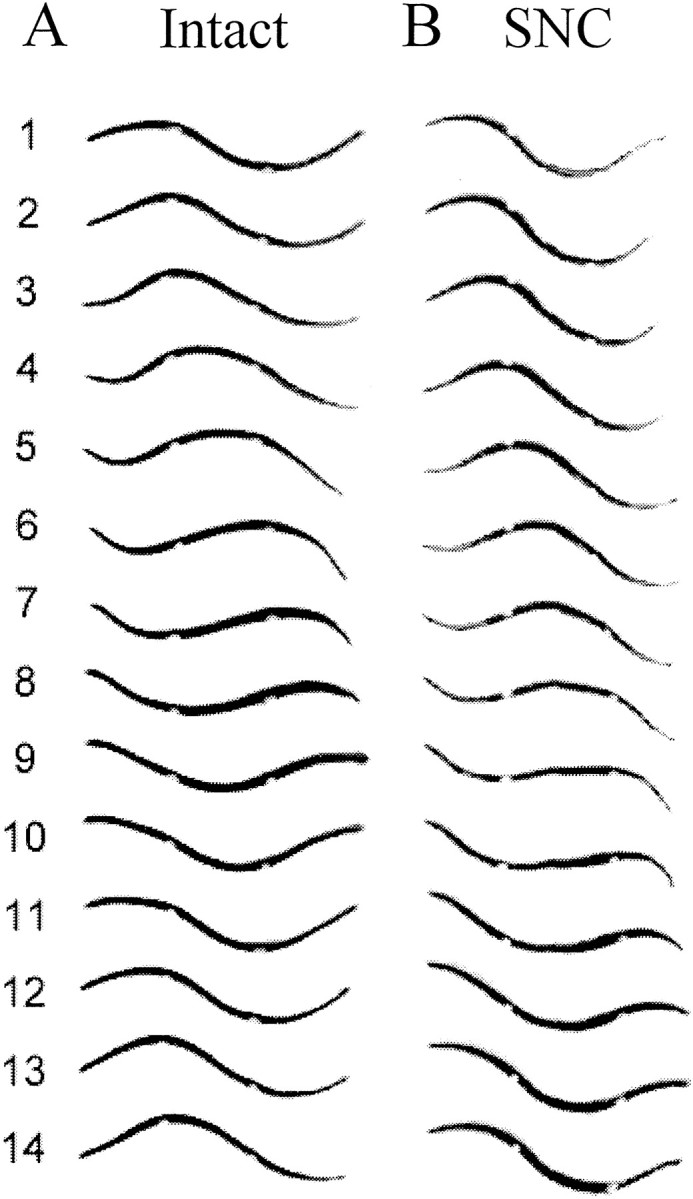Fig. 3.

Swim body waves of a freely swimming leech before and after its nerve cord was severed. Each column shows sequential video frames of the leech in side view. Beads were sewn to the body wall at midbody segments M7 and M14 as markers to facilitate the determination of intersegmental phase relationships. A, Nerve cord intact. A full sinusoid-like swim wave was developed along the leech body, with a crest and a trough passing backward while the leech was swimming forward (anterior is to the left).Frames 1 and 12 show identical profiles, with a cycle period of 11/30 or 0.37 sec. The crest arrives at M7 and M14 in frames 2 and 6, so the crest-to-crest phase lag was [(6.0 − 2.0)/11] * 360° = 131°. Similarly, trough-to-trough phase lag was [(11.0 − 7.6)/11] * 360° = 111° (the trough arrives at M14 betweenframes 7 and 8 and was interpolated asframe 7.6). On average, the phase lag from M7 to M14 was 121°. B, The same leech after its nerve cord was severed. The entire length of the preparation maintains a smooth and strong swim body wave, indicating that the posterior end is active during swimming. More than a full sinusoid-like wave is developed, especially evident in frames 6 and 13 in which two troughs or crests can be observed. Frames 1and 14 are at the same phase angle, so the cycle period is 13/30 or 0.43 sec. Crest-to-crest phase lag is [(8.8 − 4.2)/13] * 360° = 127°, and trough-to-trough phase lag is [(14.8 − 9.4)/13] * 360° = 150°. The average phase lag from M7 to M14 is 139°.
